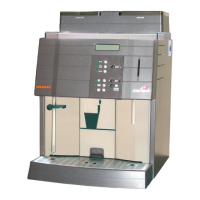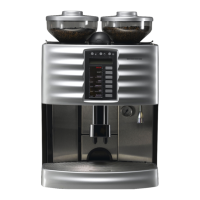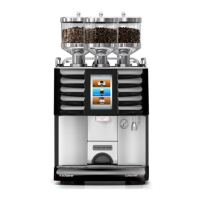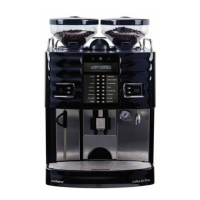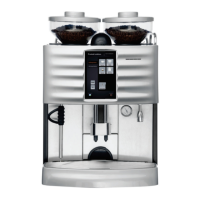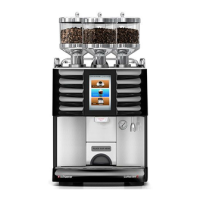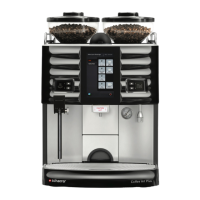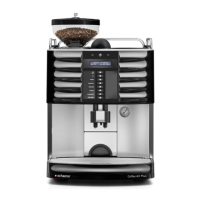Chapter 2 General notes for service technicians
SMSO-2-02.02- 15.07.03 11
2 General notes for service technicians
2.1 Equipment
There are three important pre-requisites for all service techni-
cians in order that they can carry out efficient and cost-
effective maintenance to coffee machines.
Material equipment
Service vehicle, tools, testing equipment, spare parts,
technical documentation.
Technical knowledge
general technical knowledge, knowledge of the machine
functions, and an understanding of the process (how the
components interact and affect one another), the use of
testing equipment to diagnose faults quickly and clearly,
observing safety regulations and work hygiene rules, a
responsible manner of working with spare parts and con-
sumables.
Versatile and craftsman-like skills
Coffee machines are extremely complex technical sys-
tems. Due to their compact structure, the system compo-
nents are very tightly packed and nested together. Any
person carrying out maintenance work must therefore be
a skilled craftsman and must work with great care. Main-
tenance work should be carried out with great care not
just to prevent the risk of injury, but also to avoid damage
as a result of careless or improper working methods.
This section contains information that is necessary to provide
a service technician with everything he requires. Having excel-
lent equipment still does not make a good service technician,
but on the other hand a very good service technician cannot
carry out maintenance work without suitable tools, utilities and
spare parts.
2.1.1 The principles of maintenance
A minimum stock is required in tools and testing equipment
(measurement instruments and accessories) so as to:
be able to carry out maintenance work (preventative
maintenance)
be able to carry out repairs to all systems (including the
refrigerator.
to make adjustments in order to optimise product quality.
A well regulated and perfectly maintained set of tools / utilities
is also necessary in order to be able to comply with safety and
hygiene regulations during maintenance work. Here there are
two areas of safety regulations:
Regulations covering product safety and its users
(settings, torques, use of lubricants, replacing safety
components, compliance with nominal values, etc.
Regulations covering the personal protection of the
service technician and the machine material, (in particular
protection from: electric shock, scalds, hazards from
pressure containers, ESD etc.
2.1.2 Tools and test equipment
The illustration overleaf shows which tools and testing equip-
ment a service technician must have available as a minimum,
and as the optimum.
The minimum stock of tools can be expanded until it becomes
the optimum stock of tools and utilities.
2.1.3 Spare parts
The manufacturer does not provide special maintenance or
repair kits for maintenance and repair work. The “SO2 ser-
vice instructions” and the “Refrigerator service instructions”
tables are the basis of proper preventative maintenance.
These tables set down the number of coffee servings or the
service life in months for all significant components, after
which they must be replaced. These tables form the basis of
the type and quantity of spare parts that must always be to
hand before servicing commences.
The following rule applies as a recommendation for a mini-
mum spare parts stock :
Twice the amount of materials stated in the SO-2 and
Refrigerator service instructions.
1 x 063902 spare parts case, large for SO-2
1 x 063903 spare parts case, small for SO-2
1 x 063904 spare parts case for SO-2 foamer and
refrigerator
In addition to special spare parts, there should also be avail-
able a comprehensive assortment of screw fittings, pipes,
hoses, cables, and plugs. Please observe the differing condi-
tions of use and the usage instructions for these materials.
Make sure that you can carry out efficient servicing by carrying
a sufficient range of parts. You will find further information
relating to material specifications, dimensions tables and pro-
cessing instructions in the “screw fittings” section of the spare
parts catalogue.
Otherwise you should obtain and store spare parts in accor-
dance with the requirements and guidelines of the service
point concerned.
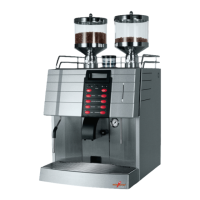
